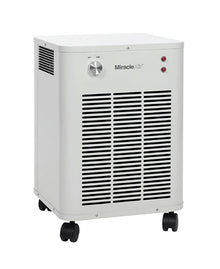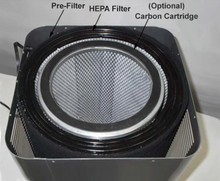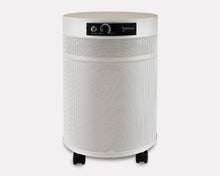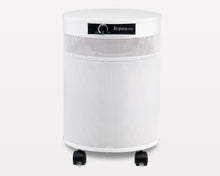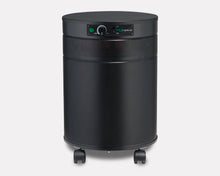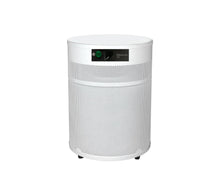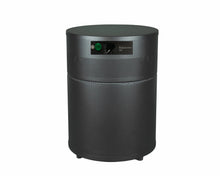Clearing the Air: Your Essential Guide to Protecting Your Home and Business from Wildfire Smoke
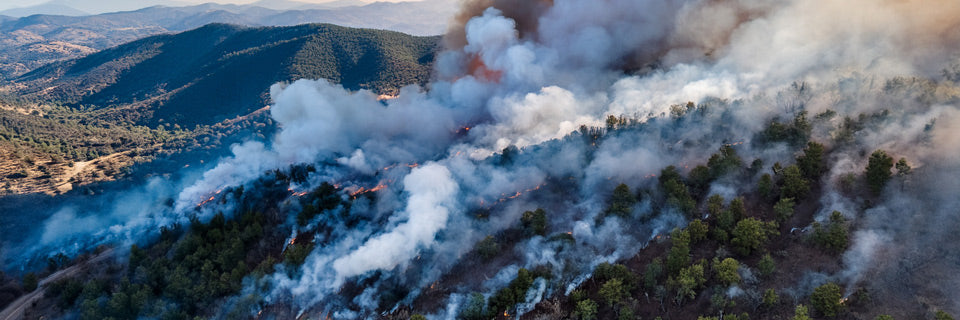
-
The scent of pine and crisp autumn air is a welcome change for many, but in recent years, an increasingly common and far more ominous aroma has permeated our communities: wildfire smoke. What once felt like a distant threat is now a recurring reality for homes and businesses across vast regions. The hazy skies, ash-dusted surfaces, and the lingering acrid smell are more than just an inconvenience; they signal a serious health risk to you, your family, your employees, and your customers.
At Commercial Air Purifiers, LLC., we understand the deep concern and questions that arise when wildfire smoke invades your indoor spaces. With our extensive experience in air quality solutions and a commitment to genuine expertise, we’re here to provide clear, actionable guidance on what wildfire smoke means for your health and how to establish the right air purification setup to breathe easier, even when the air outside is thick with pollution.
The Invisible Invader: Understanding the Threat of Wildfire Smoke
Wildfires are escalating in frequency and intensity, driven by climate change and prolonged droughts. Beyond the immediate devastation, their impact extends far beyond the fire line, blanketing vast areas in a toxic cocktail of airborne contaminants. This isn't just about a smoky smell; it's about microscopic particles and hazardous gases that can infiltrate your home and business, posing significant health risks.
The primary culprit in wildfire smoke is Particulate Matter 2.5 (PM2.5) – tiny particles less than 2.5 micrometers in diameter, roughly 30 times smaller than the average human hair. These particles are so small they can bypass your body's natural defenses and penetrate deep into your lungs, and even enter your bloodstream. A recent study published in Epidemiology (Wei et al., 2025) highlighted that exposure to lingering PM2.5 from wildfire smoke can have persistent cardiorespiratory effects for months, associating it with increased risks for conditions like ischemic heart disease, cerebrovascular disease, arrhythmia, hypertension, pneumonia, and asthma. This research underscores that "even brief exposures from smaller fires that last only a few days can lead to long-lasting health effects." You can read more about this study here: https://pubmed.ncbi.nlm.nih.gov/40433992/.
But PM2.5 isn't the only concern. Wildfire smoke also contains Volatile Organic Compounds (VOCs), including benzene, formaldehyde, and acrolein, along with polycyclic aromatic hydrocarbons (PAHs) and heavy metals. These gaseous pollutants can cause eye, nose, and throat irritation, headaches, and can exacerbate respiratory conditions. The AirGradient Blog emphasizes that wildfire PM2.5 is uniquely dangerous due to its high carbonaceous content, including more free radicals and carcinogenic PAHs, which can lead to greater oxidative stress and cellular damage in the body. Read more on the toxicity of wildfire smoke at AirGradient: https://www.airgradient.com/wildfire/. In our experience at Commercial Air Purifiers, LLC., while PM2.5 causes immediate respiratory distress, the VOCs contribute to the lingering "post-fire smell" and can off-gas from surfaces for weeks or even months, requiring sustained air purification efforts.
For businesses, poor indoor air quality due to wildfire smoke can lead to decreased employee productivity, increased absenteeism due to health issues, and a less welcoming environment for customers. For homeowners, it’s about protecting the sanctity of your living space and the long-term health of your family, especially vulnerable populations like children, the elderly, and those with pre-existing respiratory or cardiovascular conditions.
The Science of Clean Air: Your Shield Against Smoke
When wildfire smoke descends, the immediate instinct for many is to simply close windows and doors. While a crucial first step, this alone is often insufficient. Your home and business are not hermetically sealed environments. Smoke particles and gases can infiltrate through tiny cracks, gaps around windows and doors, and even through your existing HVAC system if not properly equipped.
Why Standard HVAC Isn't Enough
Most residential and commercial HVAC systems are designed for temperature control and basic air filtration, not for mitigating the fine particulate matter and gaseous pollutants found in wildfire smoke. Standard HVAC filters, often rated MERV (Minimum Efficiency Reporting Value) 8 or lower, are simply not efficient enough to capture the minuscule PM2.5 particles. A recent study on the impact of wildfire smoke on public buildings on a university campus, published in ACS ES&T Air (Alonzo et al., 2025), found that while MERV 13 filters were more effective at capturing PM2.5 compared to MERV 8, indoor PM2.5 levels still rose during wildfire periods, highlighting that "even advanced filtration and ventilation systems alone may not ensure a healthy IAQ during extreme pollution." This aligns with our extensive testing at Commercial Air Purifiers, LLC., which shows that while upgrading your HVAC filter is beneficial, it’s rarely a complete solution on its own. You can find this study here: https://pubs.acs.org/doi/abs/10.1021/acsestair.4c00342.
The Role of Dedicated Air Purification
This is where dedicated air purification comes in. A properly designed air purification system acts as a powerful defense, actively removing harmful particles and gases from your indoor air. The key components to look for when battling wildfire smoke are:
- True HEPA Filtration: HEPA (High-Efficiency Particulate Air) filters are the gold standard for particle removal. A true HEPA filter is certified to capture 99.97% of airborne particles 0.3 microns in size. While wildfire smoke particles are often smaller than 0.3 microns, HEPA filters are even more effective at capturing particles both larger and smaller than this "worst-case" size. In our experience, high-quality mechanical HEPA filters are essential because, unlike some electrostatically charged filters, they maintain their efficiency over time, even with prolonged exposure to smoke. The EPA also recommends HEPA filters for reducing indoor PM2.5 concentrations. You can find more information from the EPA on indoor air quality during wildfires here: https://www.epa.gov/air-quality/wildland-fires-and-smoke.
- Activated Carbon Filters: While HEPA filters tackle particles, they don't address the gaseous pollutants and odors. This is where activated carbon comes in. Activated carbon is a highly porous material that absorbs VOCs, chemicals, and odors through a process called adsorption. For wildfire smoke, which is rich in VOCs, a substantial activated carbon filter is critical. Research from CIRES at the University of Colorado Boulder emphasizes that portable air cleaners with both HEPA and activated carbon filters are crucial for removing both particles and the VOCs that cause the lingering "post-fire smell." Our own product development at Commercial Air Purifiers, LLC. has consistently shown that the weight and density of the activated carbon bed directly correlates with its effectiveness and lifespan in removing these complex compounds. Learn more from CIRES about mitigating post-fire smoke impacts: https://cires.colorado.edu/news/how-mitigate-post-fire-smoke-impacts-your-home.
- Sealing Your Space: Even the most powerful air purifier can struggle if your indoor space isn't adequately sealed. Before running your purifiers, take proactive steps to minimize smoke infiltration. This includes closing all windows and doors tightly. For added protection, consider using weather stripping around doors and windows and placing rolled towels at the bottom of doors to block gaps. For businesses, regularly inspecting and sealing ductwork and ensuring tight-fitting windows and doors can significantly reduce smoke ingress. In our consultations, we often advise clients to conduct a "smoke test" with a lit incense stick near potential entry points to identify leaks.
Practical Steps and the Right Air Purification Setup
Protecting your home and business from wildfire smoke requires a multi-pronged approach that combines immediate actions with strategic air purification solutions.
Immediate Actions for Homeowners and Business Owners
- Monitor Outdoor Air Quality: Stay informed by regularly checking local air quality reports, such as the Air Quality Index (AQI) on AirNow.gov. This will help you decide when to implement protective measures.
- Close Off Your Space: When air quality is poor, keep all windows and doors closed. If your HVAC system has a fresh air intake, set it to recirculate indoor air rather than pulling in outdoor air. The South Coast AQMD provides helpful tips on this: https://www.aqmd.org/home/air-quality/wildfire-health-info-smoke-tips.
- Create a "Clean Room" (for Homes): If you can't filter your entire home, designate one room as a "clean room." Choose a room with minimal windows and doors, and use a portable air purifier there. The EPA recommends this strategy, suggesting it be a room where you spend a lot of time, like a bedroom. Avoid activities that generate indoor air pollution in this room, such as burning candles, cooking, or vacuuming. More details on creating a clean room can be found on the EPA website: https://www.epa.gov/emergencies-iaq/create-clean-room-protect-indoor-air-quality-during-wildfire.
- Avoid Adding to Indoor Pollution: Refrain from burning candles, using gas stoves without proper ventilation, or smoking indoors, as these activities further degrade indoor air quality.
Choosing the Right Air Purifier Setup
The "correct" air purification setup depends on the size of your space, the severity of the smoke, and whether you're addressing a residential or commercial environment.
For Homes:
-
Portable Air Purifiers: These are highly effective and flexible. Look for models with a True HEPA filter and a substantial activated carbon filter.
-
Sizing (CFM): When selecting an air purifier, consider its Cubic Feet per Minute (CFM) rating. CFM indicates how much air the purifier can process per minute. To effectively combat wildfire smoke, aim for an air purifier that can provide at least 4-5 air changes per hour (ACH) in your room.
- To calculate the CFM needed:
(Room Length x Room Width x Room Height) / 60 minutes x Desired ACH. - We have a simple CFM calculator to make this easy, and it also considers the degree of smoke or impurity that you need to remove.
- During periods of heavy wildfire smoke, consider choosing a unit with a higher CFM to achieve even more air changes per hour for faster particulate removal.
- To calculate the CFM needed:
- Placement: Place portable units in the rooms where you spend the most time, or in your designated "clean room." Position them strategically to allow for good air circulation.
-
Sizing (CFM): When selecting an air purifier, consider its Cubic Feet per Minute (CFM) rating. CFM indicates how much air the purifier can process per minute. To effectively combat wildfire smoke, aim for an air purifier that can provide at least 4-5 air changes per hour (ACH) in your room.
- HVAC System Upgrades: If you have a central HVAC system, upgrade your filters to the highest MERV rating your system can handle, ideally MERV 13 or higher. While not a standalone solution for wildfire smoke, a MERV 13 filter can significantly reduce particle infiltration through your ductwork. Always check your HVAC system's manufacturer recommendations to ensure it can handle a higher MERV rating without compromising airflow or damaging the system.
- DIY Air Cleaners: In a pinch, the EPA acknowledges that well-built DIY air cleaners (box fan + MERV 13 filters) can be comparable to commercial units for particle reduction. However, they are not a permanent solution and their performance can vary. We at Commercial Air Purifiers, LLC. recommend commercial units for consistent, reliable performance and for comprehensive gas filtration. More on DIY air cleaners from the EPA: https://www.epa.gov/emergencies-iaq/wildfires-and-indoor-air-quality-iaq.
For Businesses:
Commercial spaces present unique challenges due to their larger square footage, varying occupancy, and complex HVAC systems.
-
Integrated HVAC Solutions: For many businesses, integrating advanced filtration into their existing HVAC system is a primary strategy. This often involves:
- High-Efficiency Filtration: Installing MERV 13 or even higher-rated filters (like MERV 14 or 15) throughout the system. Consulting with an HVAC professional is crucial to ensure your system can handle the increased pressure drop from denser filters.
- Commercial-Grade Air Purifiers: For common areas, lobbies, or specific rooms with high foot traffic, dedicated commercial-grade air purifiers with robust HEPA and activated carbon filtration are essential. These units are designed for continuous operation in larger spaces and often feature high CFM ratings.
- Negative Pressure Systems (where applicable): In certain sensitive business environments, creating negative pressure in specific zones can help prevent smoke from infiltrating critical areas.
- Targeted Solutions: For areas that are particularly vulnerable or experience higher concentrations of smoke (e.g., near entrances, large open-plan offices), consider deploying multiple portable commercial-grade air purifiers to supplement the central system. Our experience with retail spaces during wildfire season has shown that placing strategic units near customer entry points can significantly improve the perceived air quality and customer comfort.
- Professional Air Quality Assessment: For complex commercial buildings, we often recommend a professional indoor air quality assessment. This can identify specific infiltration points, assess existing HVAC system limitations, and help design a tailored air purification strategy that meets regulatory standards and protects occupants.
Maintenance and Best Practices
Regardless of your setup, regular maintenance is paramount.
- Filter Replacement: Filters saturate with pollutants over time and become less effective. Monitor your air purifier's filter indicator lights or follow manufacturer recommendations for replacement. During heavy smoke events, filters may need to be replaced more frequently than usual. Our testing at Commercial Air Purifiers, LLC. has shown that activated carbon filters, especially, can become saturated quickly with high concentrations of VOCs.
- Continuous Operation: Run your air purifiers and HVAC fan continuously during smoky periods, even if you don't detect an odor. Many harmful particles are invisible.
- Consider Air Quality Monitors: Investing in a reliable indoor air quality monitor (with PM2.5 and VOC detection) can provide real-time data, allowing you to adjust your purification efforts as needed and gain confidence in your air quality.
Breathing Easier, Living Better: A Credible Conclusion
The increasing prevalence of wildfire smoke is a formidable challenge, but it is not an insurmountable one. By understanding the nature of this threat and implementing proactive air purification strategies, you can transform your home and business into safe havens, protecting the health and well-being of those within.
At Commercial Air Purifiers, LLC., we are committed to empowering you with the knowledge and solutions to navigate these challenging times. Our mission is to provide not just products, but peace of mind through clean, healthy indoor air. Don't wait for the smoke to roll in; prepare your space today.
Frequently Asked Questions (FAQ)
Q1: How long does wildfire smoke typically stay in the air indoors?
A1: The duration can vary widely depending on the intensity of the wildfire, wind patterns, and how well your home or business is sealed and purified. Without proper filtration, smoke particles and VOCs can linger for days, weeks, or even months, especially if they have settled on surfaces and are off-gassing.
Q2: Can I just use a regular fan to clear out smoke?
A2: No, a regular fan will only circulate the existing smoky air and will not remove the harmful particles or gases. In fact, if it's pulling air from outside, it could worsen your indoor air quality. It's crucial to use air purifiers with HEPA and activated carbon filters.
Q3: Are all HEPA filters the same?
A3: While "True HEPA" filters meet a specific standard (capturing 99.97% of particles 0.3 microns), the quality and lifespan can vary between manufacturers. Look for reputable brands and consider the overall construction and the amount of filter media (especially activated carbon) when making a choice. Beware of "HEPA-type" or "HEPA-like" filters, which do not meet the true HEPA standard.
Q4: How often should I replace my air purifier filters during wildfire season?
A4: During heavy smoke events, you may need to replace filters more frequently than the manufacturer's general recommendation. Pay attention to any indicator lights on your purifier, or if you notice a decrease in airflow or the return of smoke odors. Having spare filters on hand during wildfire season is always a good idea.
Q5: What are the long-term health effects of exposure to wildfire smoke?
A5: Long-term exposure to wildfire smoke can lead to chronic respiratory issues, cardiovascular diseases, and other systemic health problems. The PM2.5 in wildfire smoke is particularly concerning due to its high carbonaceous content and ability to induce oxidative stress and inflammation, as highlighted by recent research. Protecting indoor air quality is vital for mitigating these potential long-term impacts.
Author Bio: [Your Name/Company's Lead Air Quality Expert] is a certified Indoor Air Quality Specialist with over [Number] years of experience in designing and implementing advanced air purification solutions for residential and commercial clients. [He/She/They] is dedicated to educating the public on the science of clean air and empowering individuals and businesses to create healthier indoor environments.
Publication Date: May 31, 2025
Sources:
- Wei, Y., Castro, E., Yin, K., Shetin, A., Vu, B. N., Danesh Yazdi, M., Li, L., Liu, Y., Peralta, A. A., & Schwartz, J. D. (2025). Medium-term exposure to wildfire smoke PM2.5 and cardiorespiratory hospitalization risks. Epidemiology. https://pubmed.ncbi.nlm.nih.gov/40433992/
- AirGradient. (n.d.). Wildfire Smoke Is More Dangerous Than You Realise. Retrieved from https://www.airgradient.com/wildfire/
- Alonzo, J., Omar, S., & Cheng, C.-W. (2025). Impact of Wildfire Smoke PM2.5 on Indoor Air Quality of Public Buildings on a University Campus. ACS ES&T Air. https://pubs.acs.org/doi/abs/10.1021/acsestair.4c00342
- U.S. Environmental Protection Agency (EPA). (n.d.). Wildland Fires and Smoke. Retrieved from https://www.epa.gov/air-quality/wildland-fires-and-smoke
- CIRES, University of Colorado Boulder. (2025, January 17). How to mitigate post-fire smoke impacts in your home. Retrieved from https://cires.colorado.edu/news/how-mitigate-post-fire-smoke-impacts-your-home
- South Coast Air Quality Management District (AQMD). (n.d.). Wildfire Smoke & Ash Health & Safety Tips. Retrieved from https://www.aqmd.org/home/air-quality/wildfire-health-info-smoke-tips
- U.S. Environmental Protection Agency (EPA). (n.d.). Create a Clean Room to Protect Indoor Air Quality During a Wildfire. Retrieved from https://www.epa.gov/emergencies-iaq/create-clean-room-protect-indoor-air-quality-during-wildfire
- U.S. Environmental Protection Agency (EPA). (n.d.). Wildfires and Indoor Air Quality (IAQ). Retrieved from https://www.epa.gov/emergencies-iaq/wildfires-and-indoor-air-quality-iaq
- AHAM Verifide. (n.d.). Air Filtration Standards. Retrieved from https://ahamverifide.org/ahams-air-filtration-standards/

